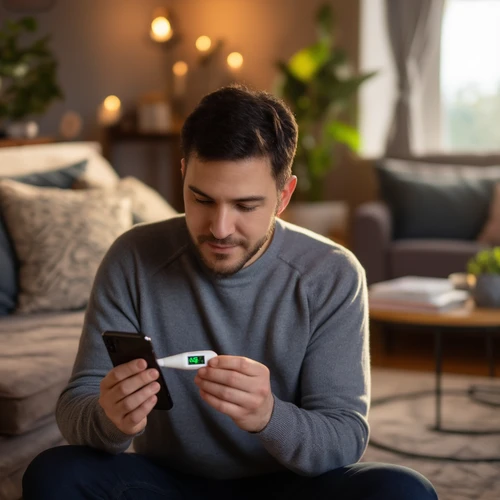Smart thermometers have revolutionized the way clinicians, parents, and caregivers monitor body temperature. Unlike traditional mercury or glass instruments, these digital gadgets offer rapid, accurate measurements with minimal user error. By employing infrared sensors, conductive probes, or wearable technology, smart thermometers capture temperature readings in seconds, providing instant feedback that's essential for early diagnosis of fevers, infections, and other health conditions.
One of the core advantages of smart thermometers is their wireless connectivity. Many devices sync with smartphones or cloud platforms via Bluetooth, allowing users to track temperature trends over time. Parents can create a real‑time log for their children, while health professionals can review longitudinal data to spot patterns that might otherwise go unnoticed. The ability to export data in PDF or CSV formats also facilitates sharing with pediatricians during telehealth visits.
Accuracy is paramount. Modern smart thermometers incorporate advanced calibration algorithms, reducing the margin of error to less than 0.1°C. Studies comparing them with standard digital rectal thermometers have found correlation coefficients exceeding 0.95, establishing trust in their readings. Some models also feature multi‑point sensors—an oral, axillary, and tympanic mode—give users flexibility while maintaining consistency across measurement sites.
For parents, user‑friendly interfaces and bright, backlit displays make it easy to read results even in low‑light conditions. A quick tap can record the result, and many appliances provide a subtle vibration or LED cue to confirm data entry. Battery life is another consideration; most smart thermometers use rechargeable lithium cells that last for weeks on a single charge, and a power‑saving mode ensures longevity.
Besides home use, smart thermometers play a vital role in healthcare settings. Hospitals deploy these devices to reduce cross‑contamination risks associated with single‑use probes. In outpatient clinics, they expedite triage, allowing physicians to prioritize patients who exceed temperature thresholds. Some models integrate with electronic health records (EHR), automatically updating patient files and alerting staff to abnormal readings.
The future of temperature monitoring looks promising. Innovations such as wearable patches that continuously track core body temperature or contactless infrared cameras that scan crowds for fever indicators are on the horizon. Even as technology evolves, the foundational benefits—speed, precision, and connectivity—will remain integral to effective health monitoring.


